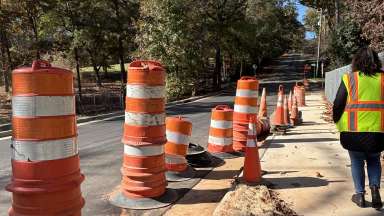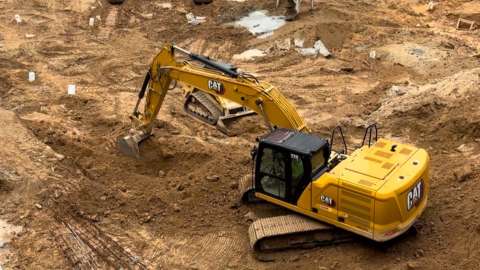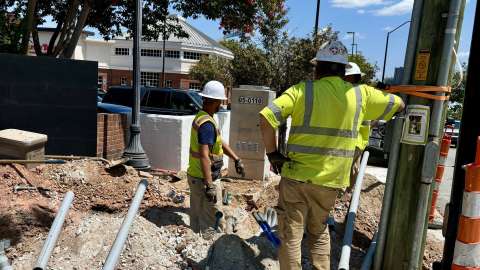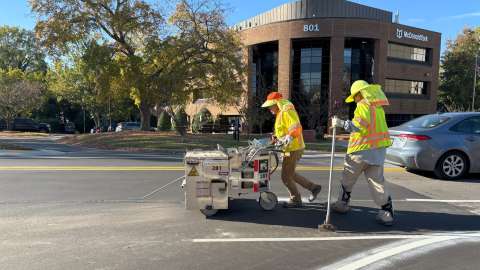Jump To:
Site preparation
Clearing and grubbing
A process that prepares a site's foundation for construction by removing vegetation and other root structures.
The process
- Clearing is the process of removing surface material like trees, grass, logs, and other debris from the construction site.
- Grubbing refers to removing stumps, roots, and other underground systems that remain after clearing.
Why is clearing and grubbing necessary?
- Ensures the construction site is safe and clean.
- Provides an even foundation for remainder of construction.
- Prevents environmental issues that could affect quality of work.
Utility work
Potholing (daylighting)
Potholing, also known as daylighting is the process of digging test or small holes to locate underground utilities. This technique is used to identify any leaks, cracks, or damage.
Benefits of potholing
- Provides a direct line of sight for contractors
- Helps contractors identify utility locations
- Minimizes potential damage during the excavation process
Street resurfacing
Milling
- Milling is the process of removing the top layer of a surface to prepare it for paving.
- This process is typically done at night to minimize traffic disruption and inconvenience for drivers.
Paving
- Paving is the process of laying new concrete or asphalt to create a firm, level surface for travel.
- This process helps create durable and smoother roads, driveways, sidewalks, and other infrastructure.
Why is milling and paving necessary?
- Repairs damaged and uneven pavement surfaces
- Provides a smoother surface for road users
- Restores a road's durability and lifespan
Pavement markings
Thermoplastic striping
Thermoplastic striping is a pavement marking process, where contractors apply heated thermoplastic material onto a road surface. This is done to create roadway markings and symbols.
The process
- Thermoplastic is typically heated to 400 degrees in a melt kettle.
- A striping truck is used to apply the thermoplastic to the road surface.
- Glass beads are dropped immediately into the thermoplastic; these beads make the stripes more reflective and visible to drivers at night.
Durability
- Thermoplastic striping is highly durable, lasting anywhere between 3-5 years.
- Resistant to fading, chipping, and cracking; depending on weather conditions.
- The air temperature must be at least 55°F to apply thermoplastic properly.




